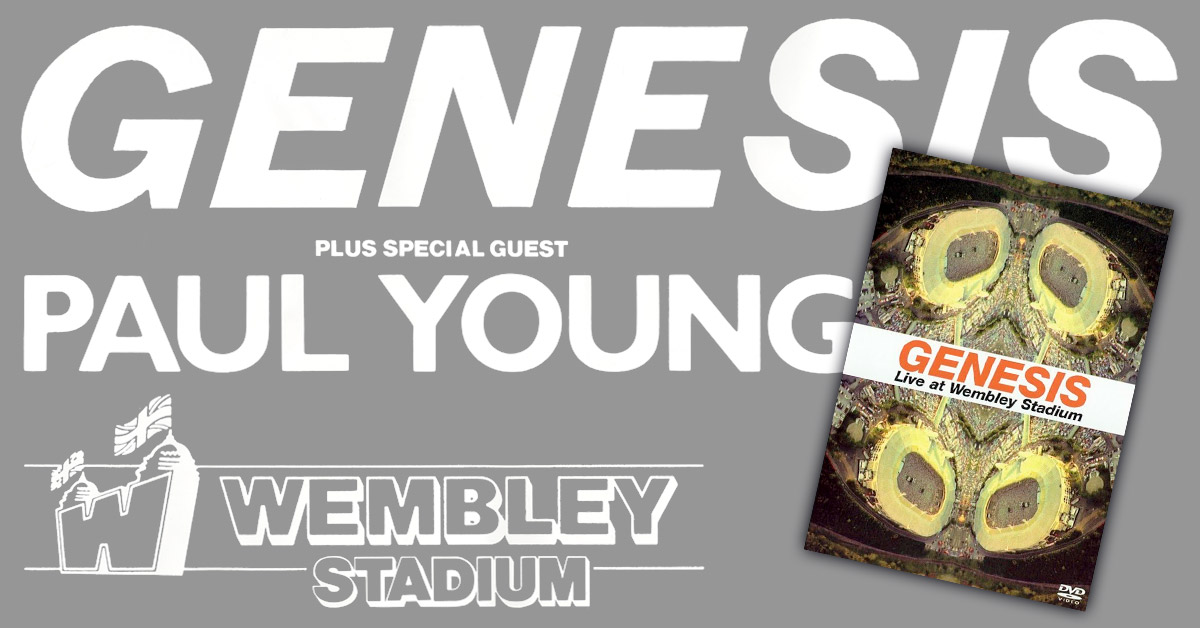- Article
- Read in 11 minutes
Genesis – Live At Wembley Stadium – DVD reassessment
On the occasion of the release of the 2003 BBC Broadcast Boxset, Tom Morgenstern has reassessed the DVD Live At Wembley Stadium.
A revisit to a DVD after almost 20 years can be similar to a reunion with distant relatives – one is actually looking forward to it, but is quickly annoyed by the same quirks and mannerisms of the protagonists. To be upfront: that’s not quite the case here, although the journey goes even further back into the past. The four final concerts of the Invisible Touch Tour at London’s Wembley Stadium (1-4 July 1987) were professionally recorded in sound and vision and the best pieces compiled into a two-hour video. This was already known from the 1988 VHS video cassette with the domino cover – the collector fondly remembers the supposedly limited version with the enclosed. CD with the live version of Domino.
When the DVD was finally released on 17 November 2003, the enthusiasm of the fans was limited because there were hardly any extras worth mentioning compared to the VHS tape. The artwork of the DVD is quite appealing, even if the 12-page booklet offers very little. At least there is a large-format colour photo on the back of the insert, which can also be seen from the inside thanks to the transparent Amaray cover. Typography and the rest of the design follow the design of Invisible Touch – which fits much better than the artwork of the old VHS cassette.
A little proudly, the text on the back cover enthuses about 288,000 spectators – the total from the four sold-out home games. The DVD menus in 16:9 format are pretty and clear; the main menu, which is not too obtrusively animated, is accompanied by an excerpt from the instrumental B-side Do the Neurotic, which is also featured in the video credits.
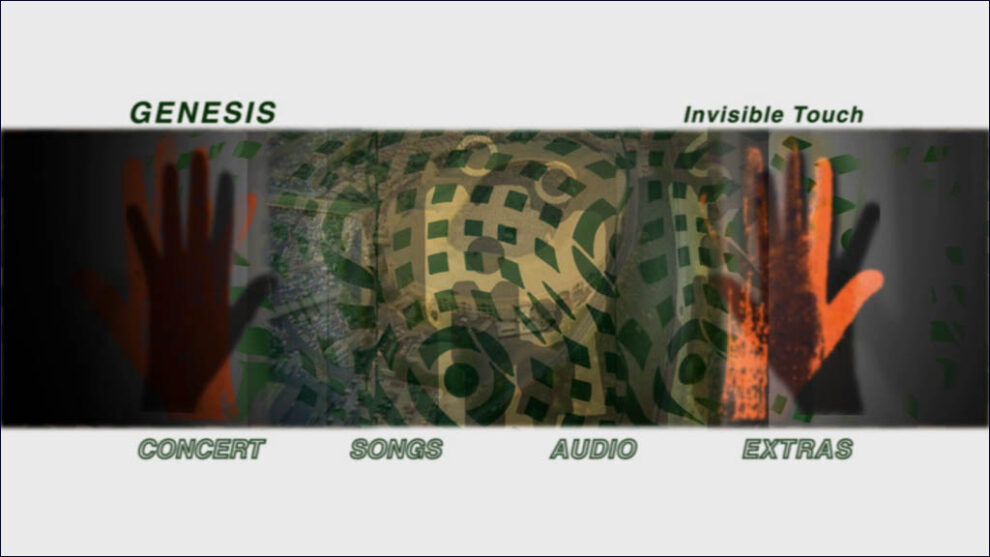
The “Extra” section features the 16:33 min tour documentary that was already available on the VHS cassette, including whimsical backstage footage (Collins without pants), interviews with all band members and some short clips from other shows; worth mentioning is a 15-second video snippet of Apocalypse in 9/8 (from the In the Cage medley from the first tour leg, played only in the US and Australia). In addition, the most important pages of the large-format programme booklet can be viewed in drastically reduced size. There is also a gallery with 20 contemporary promo and stage photos.
Those who had expected the In The Cage medley with …In That Quiet Earth and Afterglow, which had fallen victim to the scissors, to be re-included in the new edition, were once again disappointed. In later interviews, the band admitted that the medley had been used to change the audio and video media used for the recording. Here they had entered new technical territory: Sony’s professional HDVS system, which had just come onto the market, with the first commercially available HDTV cameras with analogue recording, 60 frames per second and 1125 lines of vertical resolution in an aspect ratio of 5:3.
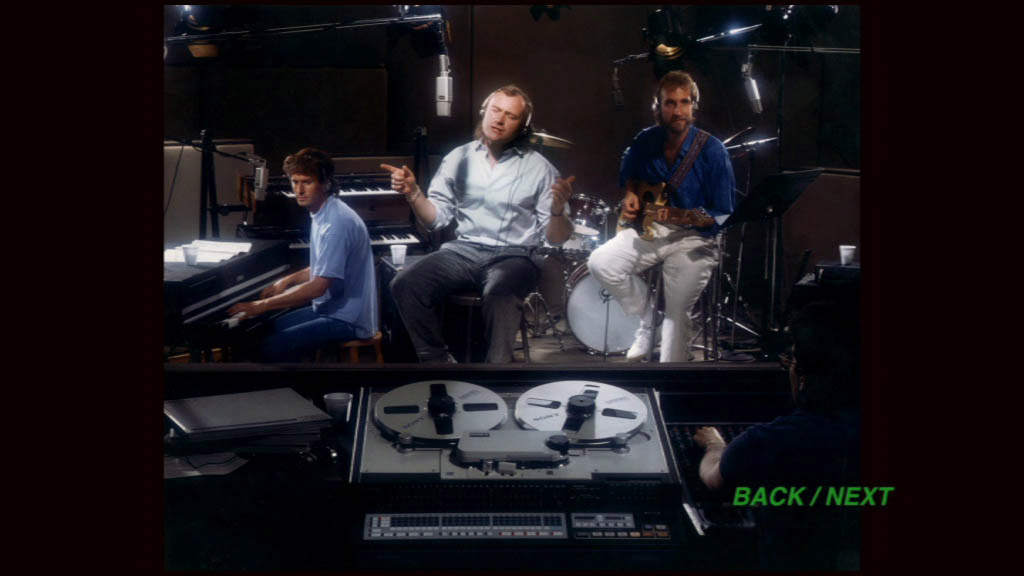 The sound was recorded digitally for the first time with a 24-track Sony DASH 3324a – this tape machine can be seen in the very first picture of the photo gallery in the extras – and even the audio for the live radio broadcast was mixed digitally – a premiere even for the BBC.
The sound was recorded digitally for the first time with a 24-track Sony DASH 3324a – this tape machine can be seen in the very first picture of the photo gallery in the extras – and even the audio for the live radio broadcast was mixed digitally – a premiere even for the BBC.
The DVD production was quite complicated, because since HDVS had never caught on, it was only with luck that a functioning player could be found 16 years later. Of course, there is not much left of “high definition” on a DVD; but the picture quality is nevertheless decent, sharpness and contrast are adequate and the picture noise is kept within limits even in darker scenes – of which there are many, because the stage was not particularly brightly lit. The DVD format is anamorphically encoded widescreen in 16:9 ratio, but the 5:3 of the original causes black “pillarbox” bars on the left and right that leave out one-sixteenth of the usable width. With the tube TVs that were still common in 2003, this was probably not noticed at all, because they always cropped the picture slightly at the edges anyway.
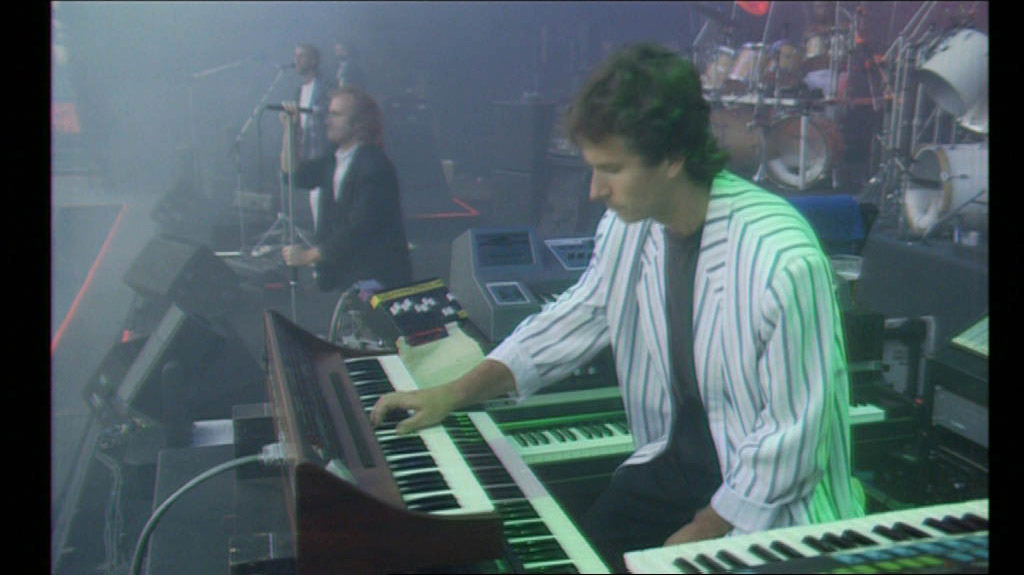 So, 20 years later, this reviewer has seen it for the first time on a modern 55-inch flat-screen LCD TV – and heard it for the first time in 5.1 surround sound, which was remixed for the DVD by Nick Davis and is available here in DTS and Dolby Digital – as always, DTS delivers the best sound quality. The stereo mix made by Hugh Padgham in 1988 was not remixed, but that would have been nice, because it sounds very flat compared to the Nick Davis mix and you can hear the pumping of a limiter. In the waveform display you can immediately see the problem: the music is limited to a maximum level of -8 dBFS almost throughout, only applause and Phil’s announcements stand out clearly – are obviously not affected by the limiter.
So, 20 years later, this reviewer has seen it for the first time on a modern 55-inch flat-screen LCD TV – and heard it for the first time in 5.1 surround sound, which was remixed for the DVD by Nick Davis and is available here in DTS and Dolby Digital – as always, DTS delivers the best sound quality. The stereo mix made by Hugh Padgham in 1988 was not remixed, but that would have been nice, because it sounds very flat compared to the Nick Davis mix and you can hear the pumping of a limiter. In the waveform display you can immediately see the problem: the music is limited to a maximum level of -8 dBFS almost throughout, only applause and Phil’s announcements stand out clearly – are obviously not affected by the limiter.
Why this is so (and why in two cases the limiter only strikes in the middle of the music) is not clear to the observer. The hi-fi stereo soundtrack of the video cassette did not have this problem and therefore sounds much better.
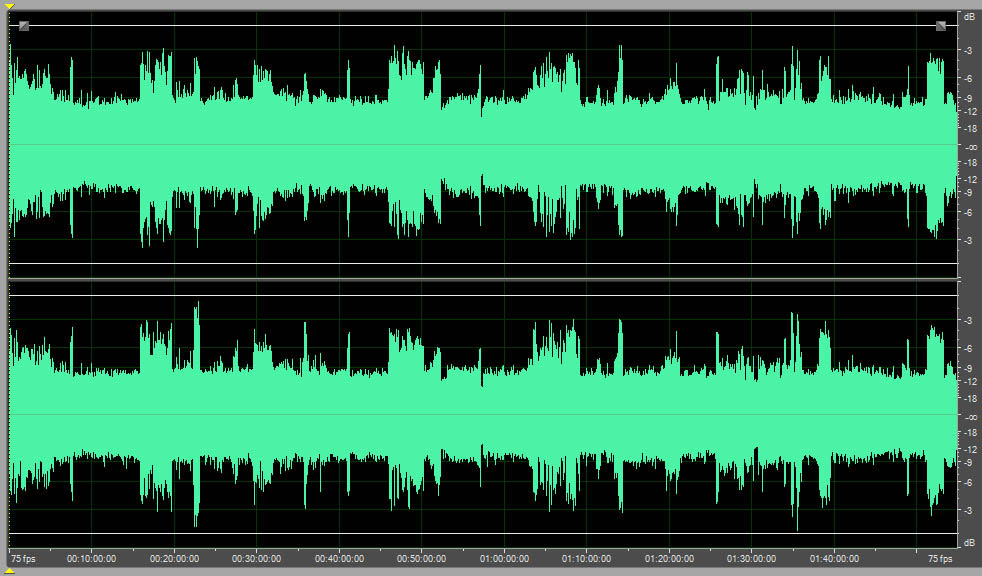
So let’s confine ourselves to the surround mix. At live concerts, the instruments are usually distributed between the front speakers like the musicians on stage and the audience has the rear space to themselves. In the living room this works quite well because it corresponds to what is seen, but it is a bit bland. Therefore, Nick Davis at least mixed the keyboard pads to the back, which gives the overall sound a bit of air. The helicopter at the beginning also flies in from behind – a nice gimmick. The subwoofer is well occupied, especially during Second Home By The Sea, it booms noticeably in the lower rumble and fits the theme of the piece. It has a lot of power, especially the drums are really crisp.
So in a home cinema the concert comes across well. The people in the stadium obviously had a great time. The eighties were characterised by mullets and shoulder pads – both are well represented here, in the audience as well as on stage. US-American Jim Yukich has directed all music videos by Genesis, Phil Collins and Mike + The Mechanics since That’s All (1983) and was also responsible for the concert videos The Mama Tour (1984) as well as the Phil Collins TV Special and VHS release No Ticket Required (1985). His work here also follows the MTV-influenced aesthetic of the time with hectic cuts and many close-ups with moving cameras. Over the course of two hours, this can be a bit exhausting, but was considered chic at the time.
Compared to earlier tours, Phil Collins has largely shed his notorious ribaldry when announcing to home audiences. At the distance of 35 years, however, his quips seem a little tired and it is clearly noticeable that he has perhaps reeled off the announcements a little too often and too word-for-word now that the tour is coming to an end. He even makes fun of himself a little about that. His detailed explanation of the “Domino Principle” appears to be a bit hackneyed and he also seems to have the least fun with his proclaimed “Audience Participation Time”. With the distance of the years, this is not surprising – the viewer sometimes wonders what all that was about and why they didn’t just make music instead. And, while asking this question, why not more different music?
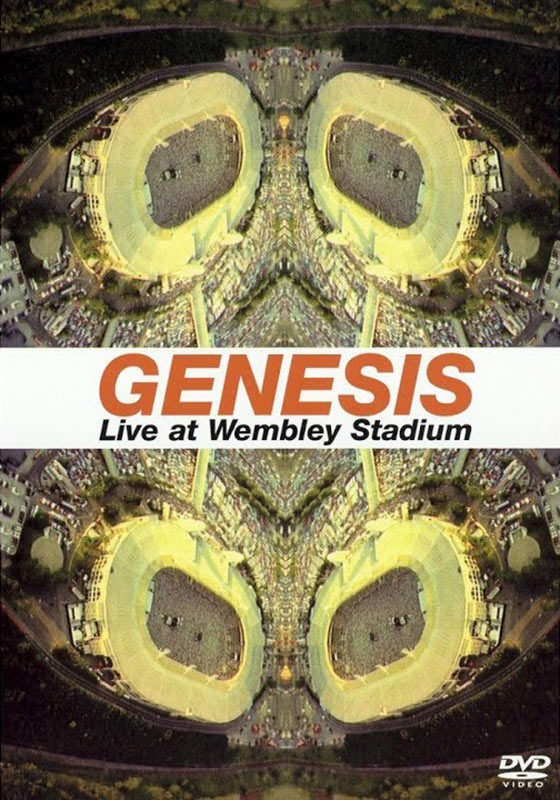
As the core of the show, the Invisible Touch album was performed almost in its entirety on this tour, which did not stand out for its great artistic range anyway. Tony Banks explains in the “Extra” documentary that only Anything She Doeswas too difficult to play live. A somewhat strange statement, because ten years earlier Genesis had no problems with difficult songs, when they were still considered the spearhead of British progressive rock. So they obviously preferred to keep the setlist simple – and also short. As a result, all the pieces have more or less the same tempo, the same sound, the same arrangement. More variety would not have done any harm here – the loss of the cut-out part with the three older pieces seems doubly painful.
Also missing are the multi-voiced backing vocals so effectively elaborated on the originals, which Collins himself provided in the studio. Abacab suggests that it could have worked live, with acceptable support from Rutherford and Banks in the chorus as alternating vocals. But these contributions are the exception. It almost seems as if all the songs are endlessly extended so that Collins gets the opportunity to sing both lead and backing vocals, if not at the same time, then one after the other. Otherwise, he also likes to make use of annoying ad-libs that are supposed to appear improvised, but are just as precisely rehearsed and as little spontaneous as the rest of the musicians’ performance.
Especially in view of the then already very extensive back catalogue (Invisible Touch was already the 13th studio album), one could have wished that the precious time had not been frittered away with silliness like the five-minute “Audience Participation Time”. Also, in view of the long list of deletions with many great pieces from the band’s own history, it seems inconclusive to fill the almost quarter-hour encore medley with cover versions, which may be a nice homage to the 60s, but otherwise have very little to do with Genesis music.
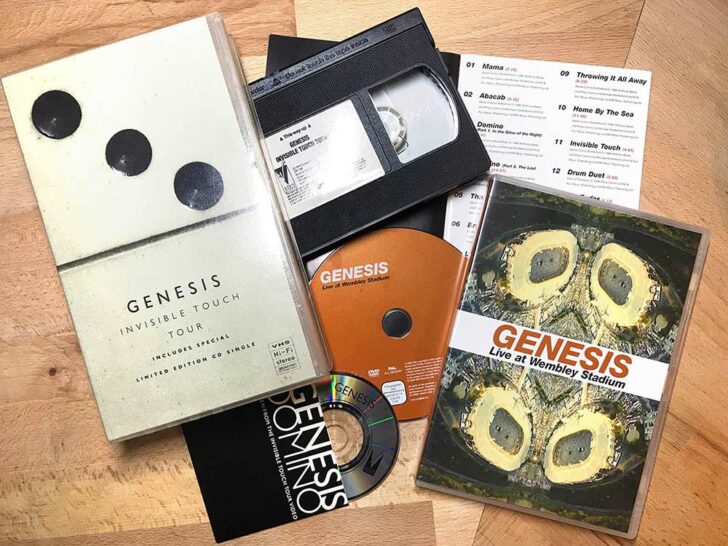
An interesting nerd question would be which songs are from which of the four Wembley concerts. Especially because the last concert on 4 July was broadcast live by the BBC and is therefore counted as BBC archive material from which the 5 CD box set BBC Broadcasts was compiled. On the order page of the box set, an online retailer wrote in advance in the track list that all the Wembley pieces were “previously released on DVD only Live At Wembley Stadium”. A strange-seeming confidence, since it is known that only the last evening was broadcast by the BBC, but the concert film was a compilation of several of the four Wembley concerts. The DVD credits even state that the footage from 2, 3 and 4 July was used. Which does not quite correspond to the facts, as was to become apparent in the following.
All four concerts are well documented; the complete recordings are available at “Genesis-Movement”, the popular torrent website tolerated by the Genesis management, where thousands of Genesis and solo concerts can be downloaded legally and free of charge. The radio recording is of course of excellent quality, unfortunately the first three concerts are only available as audience recordings in very poor sound. Frequency response and playback speed are not right here. Noise and, above all, disturbing noises such as unrhythmic clapping from the audience make it even more difficult to identify the pieces. In addition, there is the feared fact that the performance of the four evenings is almost identical, including solos, drum breaks and ad-lib vocals.
Only on closer listening one can notice minor variations, which only exist in one of the four recordings. But in this way, at least, a process of elimination is possible. Since the radio broadcast has almost perfect FM quality, it is easiest here – and it quickly turns out, to great surprise, that apparently not a single second from 4 July was used for the DVD. The recording from 1 July was also left out. Instead, the musical part of the video soundtrack consists almost exclusively of the 3 July concert, only a few weak spots with a total length of about 5:30 min were patched with the 2 July recording.
The four longer announcement blocks, on the other hand, were divided more fairly. So 2 July simply continues after the end of Domino and only at the piano entrance of That’s Allis it switched back to 3 July. And after Throwing It All Away, even before the first standalone “Digalay-ee-yay”, which Phil probably can’t get enough of even after the end of the song, they switch to 2 July and stay there for the following “Audience Participation Time”, which traditionally introduces Home By The Sea (then again from the following day).
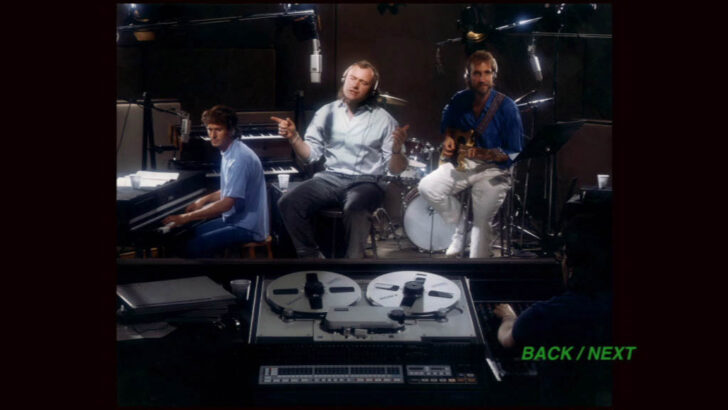
It is interesting that you can neither see nor hear the changes from one concert to the next on the DVD. Unlike the two Lyceum concerts of 6 and 7 May 1980, where Phil wore either a yellow or a blue Hawaiian shirt, great importance was obviously attached to continuity here. All four concerts also had identical setlists and start times, so that no difference was noticeable even in the degree of dusk that set in.
Conclusion: an absolutely professional video production that one could well imagine on Blu-ray, provided of course that the HDVS original in 2003 had also been digitised with at least 2K resolution (had they?).
The surround audio is top notch and the helicopter at the beginning would be perfect for a Dolby Atmos flyover – minus points for the somewhat too routine performance, for the rather boring and incomplete setlist, for the lack of relevant extras and for the messed up stereo track.
Appendix:
1. DVD-edit list (all 3 July except for inserts from 2 July marked in red):
0:00:00 Mama
0:07:43 Abacab
0:16:13 “Thank you, good evening … alright”
0:16:32 [Edit] “Tonight of course … called Domino”
0:18:43 Domino: In the Glow of the Night
0:23:03 Domino: The Last Domino
0:25:42 cont.
0:26:04 cont.
0:26:58 cont.
0:27:22 cont.
0:30:05 “Before we carry on … goes like this”
0:30:58 That’s All
0:35:56 The Brazilian
0:41:18 Land of Confusion
0:41:36 cont.
0:46:22 “Thank you … Tonight”
0:48:04 Tonight Tonight Tonight
0:57:01 Throwing It All Away
1:03:54 “Digalay-ee-yay … called Home by the Sea”
1:09:08 Home by the Sea
1:14:22 Second Home by the Sea
1:20:57 Invisible Touch
1:26:01 Drum Duet
1:32:00 / Los Endos
1:38:23 Turn It On Again (Medley)
1:52:07 “Thank you very much… goodnight”
1:54:54 [End]
The times of the cuts within songs could mostly only be roughly estimated.
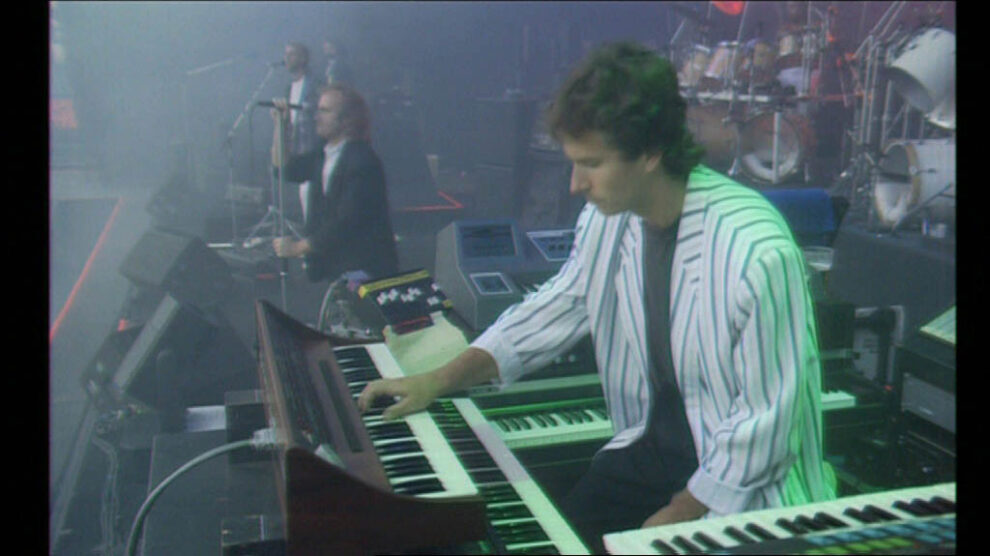
2. Small overview of official releases of individual Wembley ’87 recordings on CD singles and samplers (all follow the DVD version exactly):
Mama (from the album The Way We Walk Volume One: The Shorts Virgin GENCD4 and also from the CD single Tell Me Why Virgin 665 573) – 3 July
Abacab (from CD single Invisible Touch Live Virgin GENDX10) – the first 1:44 min have several unique features not found on any of the four Wembley recordings, but the rest is from 2 July.
Domino (3″ CD promo single Virgin Music Video VVD 358 CD) – 2 and 3 July.
That’s All (from the album The Way We Walk Volume One: The Shorts Virgin GENCD4) – 3 July
The Brazilian (from the CD single Invisible Touch LiveVirgin GENDX10 and also from the sampler Archive #2 1976-1992 Virgin CDBOX7*) – 3 July
Tonight, Tonight, Tonight (Full Version) (from the CD single Never A Time Virgin GENE11) – 3 July
Invisible Touch (from the CD single No Son Of Mine Virgin GENSD6) – 3 July
*where the date in the booklet is wrongly given as 4 July 1987
NOT recorded at Wembley 1987:
That’s All (from the CD single I Can’t Dance Virgin GENDG7)
Home By The Sea / Second Home By The Sea (from the CD single Hold On My Heart Virgin GENSD8)
Invisible Touch (from the CD single Invisible Touch Live Virgin GENDX10)
Author: Tom Morgenstern
Note: The previously published review of the DVD by Daniel Schwarz can be found here.

